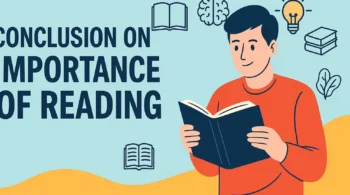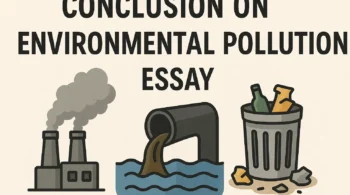The conclusion is an important component that recapitulates the key points and reinforces the significance of the work. It summarizes major findings, revisits original goals, discusses real-world implications, makes recommendations for next steps, and provides closure.
The conclusion exhibits analytical thinking by interpreting results and articulating what was learned. It demonstrates communication skills by clearly conveying complex information. Overall, an effective conclusion enhances understanding of the project or essay by transforming research into meaningful conclusions.
It highlights the contribution to knowledge and solutions regarding consumer rights and awareness. The conclusion is the final chance to impress upon readers why the project or essay matters. A thoughtful, well-written conclusion helps cement the value of the work.
Tips to write conclusion of Consumer Rights and Awareness Project
Restate the Project Purpose and Goals
- Briefly revisit the aims and objectives that framed your project to remind readers of the context.
Summarize Key Findings
- Synthesize major outcomes, results, trends and highlights from your data and analysis into a concise summary.
Discuss Real-World Implications
- Address how your findings have furthered understanding of consumer rights issues and their impacts on people’s lives.
Make Recommendations
- Based on the project outcomes, suggest practical actions, policies, educational programs, campaigns, etc. to raise awareness or strengthen consumer rights.
Acknowledge Limitations
- Identify any constraints, gaps or shortcomings in your methodology, data collection, analysis, etc. that qualify the conclusions.
End Impactfully
- Close with a statement emphasizing the importance of consumer awareness, education, empowerment, vigilance, activism, or other relevant concepts.
Proofread and Refine
- Polish the language, logic flow, and presentation of the conclusion section.
Align with Introduction
- Verify the conclusion links back to the original rationale and purpose of the project.
Cite References
- Include in-text citations for any sources referenced in the conclusion section.
Conclusion of Consumer Rights
Consumer rights and protections are essential in the modern marketplace, yet many people remain unaware or unable to exercise their rights. Through this research, we identified common abusive practices that violate consumer rights, such as predatory lending, hidden fees, defective products, false advertising, and improper use of personal data.
Our research also confirmed people’s limited grasp of basic rights. Safeguarding consumers requires comprehensive legislation, vigilant regulation, advocacy groups, and public education. Consumers must be informed of their rights to fair contracts, transparency, product safety, data privacy, grievance redress, and ethical treatment. With knowledge and collective action, people can hold companies accountable while guiding the marketplace toward greater care for human well-being.
Although progress has been made, our project demonstrates that the work of spreading awareness, expanding rights, and enabling access to justice is far from complete. An empowered, engaged consumer base is vital for both economic prosperity and social justice. We all have a role to play in understanding, exercising, and protecting consumer rights.
Conclusion of Consumer Awareness
There are still major gaps in consumer awareness regarding rights, responsibilities, safety, fraud prevention, and sustainable consumption. The research data reveals that while people have basic knowledge, complex topics like labeling laws, financial protections, environmental impact, and the risks of emerging technologies are poorly understood.
These knowledge gaps leave consumers vulnerable to deception, health hazards, and inadvertent unethical purchases. Raising consumer awareness must become a priority through education campaigns, advocacy groups, government agencies, and media. With increased awareness, people can make informed, empowered choices that drive positive marketplace and social change.
Although the scope of this project was limited, it provides valuable baseline insights into knowledge levels that can inform targeted awareness-building efforts. Moving forward, further research should continue monitoring shifts in understanding over time as outreach initiatives expand. Creating a society of engaged, educated consumers who make smart, ethical buying decisions while exercising their rights is an essential goal.
But it requires persistent, collaborative efforts between educators, governments, businesses and consumers themselves. This project has underscored that informed citizen-consumers are the key to both economic vitality and social progress.

Conclusion of Consumer Behaviour
Consumer behavior is complex and influenced by both internal factors like personality, attitudes, lifestyle, and external factors like culture, social status, reference groups and marketing. The research revealed generational differences in shopping habits, with younger consumers more motivated by trends and peer influence, while older consumers demonstrate brand loyalty.
Additionally, the experiments found pricing, quality, brand image and reviews significantly impact purchase decisions. Evidently, understanding psychological drives and cultural patterns is crucial for companies seeking to predict and respond to evolving consumer demands. More research is still needed to gain nuanced insights across demographics and product categories. Consumer behavior analysis allows businesses to make strategic decisions that align with customer motivations.
However, companies also have an ethical obligation to avoid manipulation and promote responsible consumption. Ultimately, examining the psychology and sociology underlying consumerism provides valuable insights for forging a healthier relationship between business and society.






